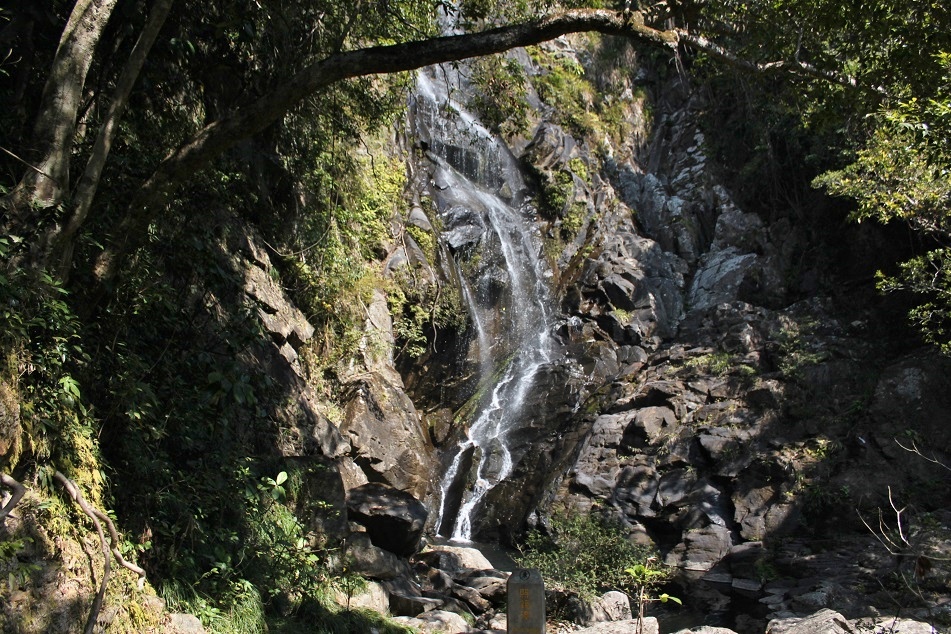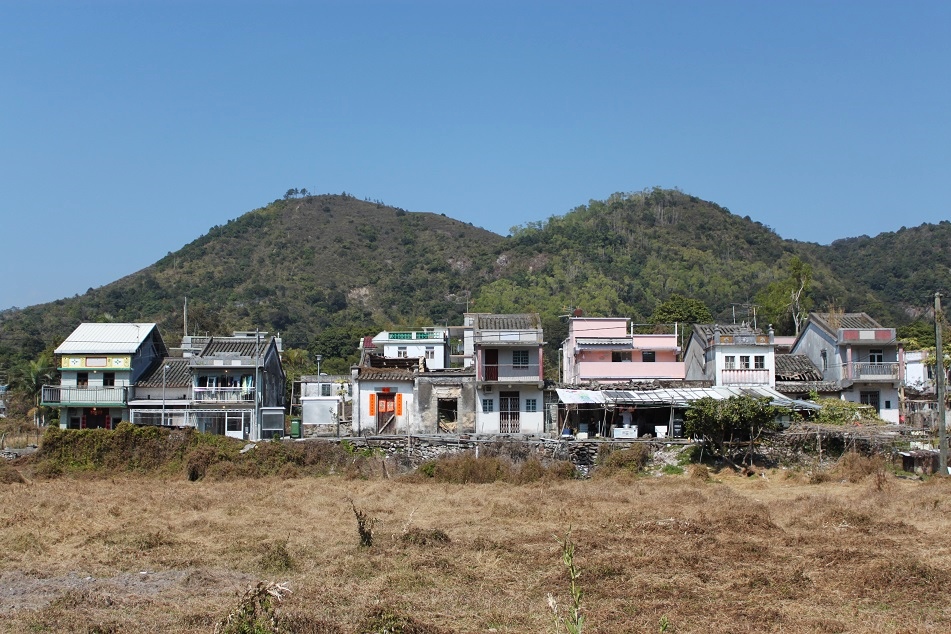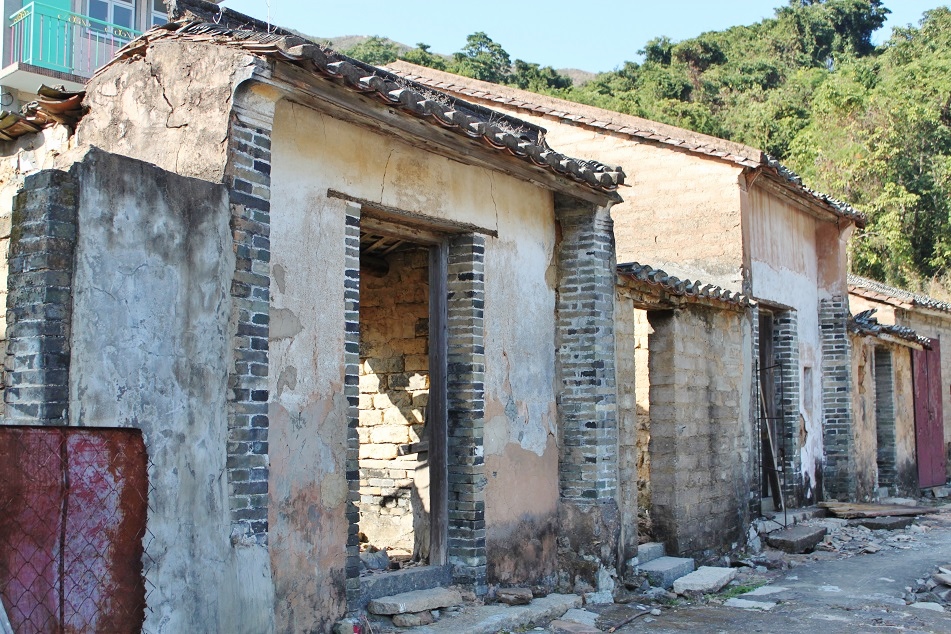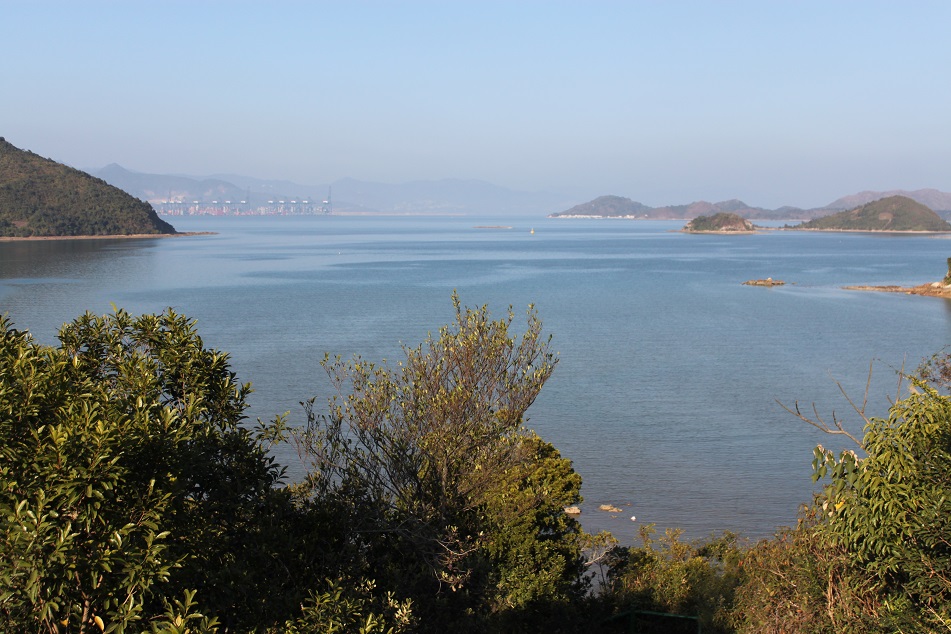Four centuries ago when China was ruled by the Qing Dynasty a few Hakka people – native to vast lands in southeastern China – searched for a new place to settle down, probably caused by growing competition and limited opportunities at home. They eventually found a secluded valley, guarded on three sides by lush forests and opened up at one side where dense shrubs and mangrove trees bordered a calm cove.
Over the years the settlement grew into a small village, and as its population flourished, so did its wealth. During its heyday up to 1,000 people called this remote village home, a peaceful place of their own where lychee trees grew in abundance and later on gave the small village its name, Lai Chi Wo, literally ‘Lychee Nest’.
Three centuries after the first settlers set foot on this piece of land, however, its residents saw fortunes gradually evaporated from their village, a similar fate shared by many villages in what is today Hong Kong’s New Territories. In a desperate attempt to reverse the bleak trend, a feng shui expert was called in to bring back the long-gone better days to the village.
Upon his advice, a feng shui wood was planted to safeguard Lai Chi Wo’s prosperity, hugging the village from three sides to ensure wealth would go anywhere but leave the small community.
Fortunes did come back, but only for a brief period of time before the tide was too strong to fight and decades later the village’s young men and women began to trickle away to find better opportunities in the city and overseas.
* * *
On the first day of last year’s Chinese New Year, James, his father, and I ventured far beyond where most casual hikers would go. Present-day Lai Chi Wo lies a mere 2 km away from the Chinese border, compared to the distance to Hong Kong Island which is more than 40 km south of the village.
The trail we took started near the Mirror Pool, a part of the Plover Cove Country Park, Hong Kong’s nature at its best. Along the way burned incense and red paper confetti were strewn all over the ground, more conspicuously near small altars and around small villages. Even in this secluded corner of Hong Kong, Chinese New Year was celebrated at full swing.
Mangrove forests, reddish rock formation, and beautiful coves abounded, but there were only a few people to be seen. Due to its remote location, the hiking trail attracts only a handful of hikers and those who wish to find an even more tranquil escape than the white sand beaches of Sai Kung.
As we walked further, we were kept reminded that China was not that far away. A big Chinese container port loomed in the distance, separated from the country park only by the calm waters around Crooked Island.
Two hours after we started the hike finally we spotted the walled village of Lai Chi Wo with its small grey houses sitting on the otherwise verdant hill. Like a refuge from the constantly busy city a few hours away, from where we stood the village exuded a sense of tranquility, peace, and interestingly… mystery.
We drew ourselves closer to the village and discovered its village temple and monastery, both seemed clean and well kept, while to the left a big banyan tree adorned with bright red lanterns provided shade on the sunny day. Two old cannons pointed to the sea, raising questions in my mind of whether there was a threat to the village in the past.
But we also discovered a confounding reality: no one was in the village.
We walked through the village’s main gate, guarded by a few dogs who appeared very keen on protecting the village from any intruders. Their loud and repetitive bark was the only sound we heard in the village. It was eeriely quiet and so bizarre since clearly the village was not completely abandoned as what happened to a village near Chek Keng. Signs of life were evident, burned papers littered some of the alleys and a Chinese flag flew high atop a house.
But no one was there.
James checked his mobile phone only to find out that in this empty village we were literally on our own. “There’s no reception on my phone.”
We walked outside the village’s walls to inspect the feng shui wood, a combination of natural and human-planted vegetation where some really odd-looking trees thrived, regardless the grim fate the village faced, a fate they were supposed to prevent from happening.
Reality, however, is something Lai Chi Wo’s residents must face, despite their effort to save the village. As the lychee trees are disappearing over the time, the Lychee Nest, it seems, has to give in and transform itself from a remote village into a heritage site of a once thriving community who brought life and energy to this desolate land, so future generations can learn and reconnect with the past.
























Interesting post Bama. Lovely photos. The empty village must have felt quite eerie, but fascinating also. I’d like to do that hike one day.
Alison
LikeLike
Thank you, Alison. It felt surreal to see how empty the village was, yet signs of life were evident. It reminded me of a scene from a movie on zombies I watched a long time ago. When you’re in Hong Kong, make a time to visit Lai Chi Wo, it’s worth the hike.
LikeLiked by 1 person
Reblogged this on Kerberos616.
LikeLike
It must have felt like a phantom village for sure! I like the way you document your articles. That makes your travel telling twice as interesting. Thanks!
LikeLike
Absolument, et merci beaucoup! I must have been carried away when I was writing this post. The feeling of being so remote in a place like Hong Kong was inexplicable.
LikeLiked by 1 person
Really nice photos! Very nice read on the village too/
LikeLike
Thank you, Victor & Andrea! I’m glad you enjoyed this post.
LikeLiked by 1 person
How eerie it must have felt
LikeLike
Very! I would have felt differently if the houses looked abandoned. But they didn’t.
LikeLiked by 1 person
Great photos! And a nice read as well. Thank you!
LikeLike
Thank you, Lo. If you love hiking and happen to be in Hong Kong, you might want to consider visiting this village.
LikeLike
The Strangler Fig tree looks amazing. I have seen some pictures with them growing even bigger. I hope I will see one in life too!
Thank you for sharing stories.
– Ruta
LikeLike
Strangler figs are some of the weird things Mother Nature has in store, and there are still a lot of wonders to be discovered. Thank you for your thought and comment, and hopefully you’ll see a strangler fig soon!
LikeLike
It must have felt odd or eerie Bama. Wonderful photos and narrative as well.
LikeLike
That’s true, Sue. If there were no dogs, the village would have been completely deserted. Thank you, as always! 🙂
LikeLike
Love the photos! 🙂
LikeLike
Thank you for your kind words, Sam. 🙂
LikeLike
I love your blog and the beautiful places you write about! I nominated you for the blog tour because your posts inspire me, you can find more information here:https://mycollegeodyssey.wordpress.com/2015/04/13/blog-tour-nomination/
LikeLike
Hi Angela. Thank you for reading, and for nominating me for the blog tour. I’m really glad you enjoyed this post, as much as I enjoyed recollecting my memory of that day I went to Lai Chi Wo.
LikeLiked by 1 person
woww.. agak horror yahh.. tapi menarik bngt!
LikeLike
Kalau ke sana jangan pas malem-malem. 🙂 Tapi overall yang paling saya suka dari tempat ini adalah ketenangannya.
LikeLike
Absolutely incredible photos. Thank you for sharing!
LikeLike
And thank you for leaving such a nice comment! 🙂
LikeLiked by 1 person
Lovely post Bama. Your words and images brought the desolation of Lai Chi Wo alive.
LikeLike
Thank you, Madhu. I guess Lai Chi Wo really cast its spell on me. 🙂
LikeLike
I’m living in Hong Kong for over 12 years by now, and I don’t even know such place do exist.
Thanks Bama, I’ll visit Lai Chi Wo soon!
LikeLike
Hi Apriel. It’s okay because even my best friend’s visit to the village with me was also his first — and he’s been living in HK for more than 10 years, I think. I wonder whether Lai Chi Wo will be as deserted when you come.
LikeLike
Reblogged this on aprielmp and commented:
#Wajib ke sini
LikeLike
Another great find Bama, I think Lai Chi Wo will be on my list. The silence of the photos and village seems a bit surreal and that would be great to see, also there is something about the mangrove swamp photo that makes me want to see it in person. Cheers!
LikeLike
Randall, Lai Chi Wo was such a deserted village when we went was probably because of the fact that the villagers went to the city or to their relatives’ houses. I wonder if you will see some locals when you go. Lately my trips to Hong Kong and some parts of Indonesia brought me closer to understanding mangroves — previously I only learned about them from school. Such a special group of plants, indeed.
LikeLike
We have mangroves below in our bay off of Lantau Island (before developing this area the mangroves were an important issue to resolve). HK has more and more of these villages that become deserted on the week days…hope that they always remain as they are this great insight into the past. Cheers.
LikeLike
I noticed the mangroves too in HK which were plentiful especially in small villages on the territory’s smaller islands. It’s really good to see how places like HK and Singapore take their environment seriously, while here in Indonesia too many people take Mother Nature for granted. Anyway, I do hope that the mangroves in HK stay for generations to come.
LikeLike
I’m glad my father suggested to hike out there, Bama. It was a first experience for me too. 🙂 Your photos of Lai Chi Wo are really beautiful – the village and its surrounds take on an almost ethereal quality in the late afternoon light. You picked out some wonderful details too. I didn’t pay much attention to that altar in the forest, since I am used to seeing them around Hong Kong!
LikeLike
Me too, James. My trip proves that two weeks in Hong Kong can get you to so many interesting places! Thank you, James, but it was also because of the nice weather and the overall ambiance of the village that helped me capture some pretty decent photos. The beauty of traveling to foreign places is you pay attention to a lot of things, exactly what I did when I saw that small altar. 🙂
LikeLiked by 1 person
This was a very nicely done post, loved it all…the words, the photos. I’ve been to Hong Kong numerous times over the years. But never been to Lai Chi Wo. Looks like I’ll have to return.
LikeLike
Thank you, Badfish. Even James had only visited the village last year. It’s easier to get to the HK airport and fly out than to get to Lai Chi Wo. I guess that’s why this place remains relatively unknown to the locals, let alone foreigners.
LikeLike
Ok, now it’s officially on my To Do list (for some reason, I really don’t like the term “bucket list”…maybe just too overused?). Thanks again for this post and info.
LikeLike
I guess the term has been haphazardly used that it reaches a point when it lacks the original meaning and spirit, if that makes any sense. Enjoy your time at Lai Chi Wo!
LikeLiked by 1 person
Right…like “awesome” (although I find myself using it). But I hate, and don’t use: “at the end of the day.”!! Hate that one. Heard one guy (from India, I think) said: “at the bottom of the day.”
LikeLike
wow! wonderful post!
https://enjoybypaula.wordpress.com posted my experience at the shard today 🙂
LikeLike
Thank you, Paula!
LikeLike
I think you were lucky, since you had a chance to explore another side of Hong Kong. Not only the glamorous downtown, but the countryside as well.
Still can not imagine the situation of this village in the night time, it’s like the setting of an abandoned village in those HK-vampire movies. I think if it is in Indonesia, it will be a perfect place for “uji nyali”. Lambaikan tangan pada kameraaaa 😀
LikeLike
That’s the advantage of having a local as your guide, in this case that happened to be my own travel buddy. 🙂
I don’t think I would even try to do the long hike at nighttime. I believe there won’t be any hopping Chinese vampires though, but still. 😀
LikeLike
Incredible pictures. I feel as if I was there. Thanks for sharing.
LikeLike
And thank you for reading and leaving such a kind comment, Cecilia.
LikeLike
Pingback: Island Life in Cheung Chau | What an Amazing World!